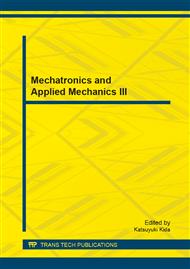p.540
p.545
p.549
p.554
p.558
p.562
p.568
p.575
p.581
Parameters Optimization for Roundness of Hemispherical Surface Milling
Abstract:
The hemispherical surface has been widely implicated in design of products. Its precise roundness, a key quality characteristic of smaller-the-better, highly depends on the milling quality of the hemispherical mold. In this paper, we study the optimal machining parameters for the roundness of the hemispherical mold processed by the five-axis NC milling machine with a rotatable-tilting table. Four machining parameters, tool’s tilt angle, surface-cutting speed, feeding per tooth, and depth in axial cutting, are considered with their three varied levels selected on the basis of the onsite professional knowledge acquired from weighing the effect of tool interference and the milling capability of machine tools. The material NAK80, one type of plastic mold steels, possessing excellent resistance and dimensional stability is used as experimental test specimens. The experimental results conclude that the optimal measurements of roundness for the concave and the convex hemispherical molds are 0.022 mm and 0.026 mm, respectively.
Info:
Periodical:
Pages:
558-561
Citation:
Online since:
February 2014
Authors:
Price:
Сopyright:
© 2014 Trans Tech Publications Ltd. All Rights Reserved
Share:
Citation:


